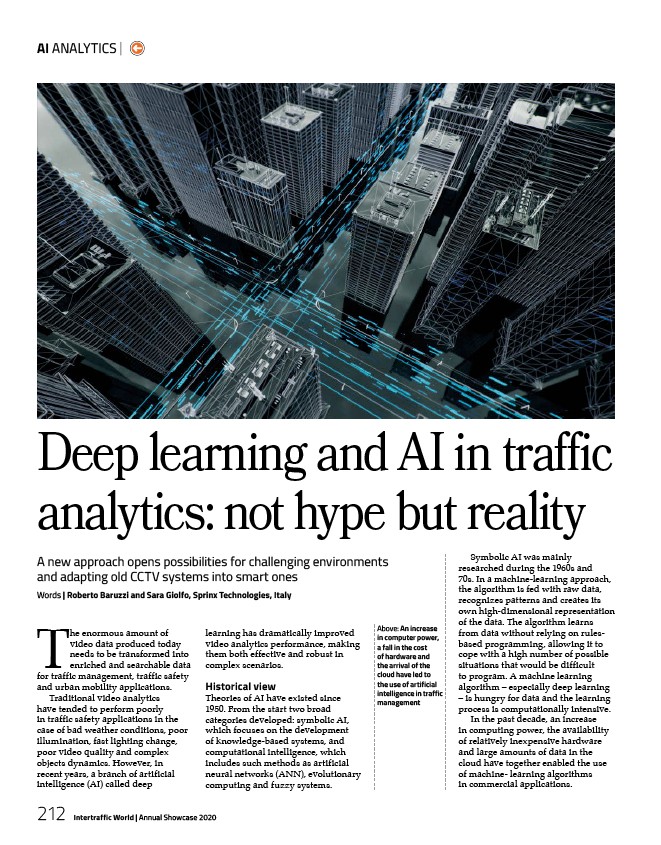
AI ANALYTICS |
Deep learning and AI in traffic
analytics: not hype but reality
A new approach opens possibilities for challenging environments
and adapting old CCTV systems into smart ones
Words | Roberto Baruzzi and Sara Giolfo, Sprinx Technologies, Italy
212 Intertraffic World | Annual Showcase 2020
Above: An increase
in computer power,
a fall in the cost
of hardware and
the arrival of the
cloud have led to
the use of artificial
intelligence in traffic
management
The enormous amount of
video data produced today
needs to be transformed into
enriched and searchable data
for traffic management, traffic safety
and urban mobility applications.
Traditional video analytics
have tended to perform poorly
in traffic safety applications in the
case of bad weather conditions, poor
illumination, fast lighting change,
poor video quality and complex
objects dynamics. However, in
recent years, a branch of artificial
intelligence (AI) called deep
learning has dramatically improved
video analytics performance, making
them both effective and robust in
complex scenarios.
Historical view
Theories of AI have existed since
1950. From the start two broad
categories developed: symbolic AI,
which focuses on the development
of knowledge-based systems, and
computational intelligence, which
includes such methods as artificial
neural networks (ANN), evolutionary
computing and fuzzy systems.
Symbolic AI was mainly
researched during the 1960s and
70s. In a machine-learning approach,
the algorithm is fed with raw data,
recognizes patterns and creates its
own high-dimensional representation
of the data. The algorithm learns
from data without relying on rulesbased
programming, allowing it to
cope with a high number of possible
situations that would be difficult
to program. A machine learning
algorithm – especially deep learning
– is hungry for data and the learning
process is computationally intensive.
In the past decade, an increase
in computing power, the availability
of relatively inexpensive hardware
and large amounts of data in the
cloud have together enabled the use
of machine- learning algorithms
in commercial applications.